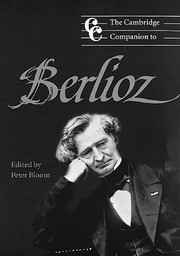13 - Performing Berlioz
from Part IV - Execution
Published online by Cambridge University Press: 28 September 2011
Summary
Berlioz left posterity an admirable performance legacy. The scores and parts published under his supervision and, for the most part, to his satisfaction, are sources that typically offer unambiguous direction as to his intent. They often reflect years of perfecting the manuscript materials in conjunction with live concerts under his own baton. His personal involvement with multiple performances of the symphonic works, unusual for its time (and far greater, for instance, than Beethoven's), led to meticulous and ongoing recomposition, and with his orchestration and conducting treatises he left useful guides to the performing forces at his disposal and his notions as to their most effective deployment. His sensitivity to the practical issues of live music-making, if not always to the cost of music and musicians, makes his work feel somehow welcoming to those who undertake it. With the exception of perhaps a half-dozen passages of legendary difficulty, the music lies well beneath the fingers and is rewarding to discover and re-create – that is, to perform.
Berlioz the conductor left across Europe a generation of professional musicians schooled in how his music was supposed to go – though too few conductors committed to his cause. By the end of his life, most of the completed works had been well performed. A good proportion of these had been heard often and were familiar to serious listeners both in Paris and elsewhere; a few – the Fantastique, the Pilgrims' March from Harold in Italy, the Roman Carnival Overture, the Hungarian March from Faust, and portions of L'Enfance du Christ – were even popular: hummed in the streets, known to hundreds.
- Type
- Chapter
- Information
- The Cambridge Companion to Berlioz , pp. 171 - 196Publisher: Cambridge University PressPrint publication year: 2000

